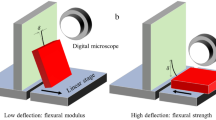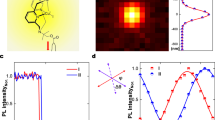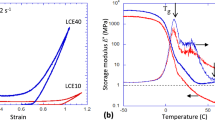Abstract
THE application of fairly high pressures to fibre specimens on the microscope has been found to produce types of photoelastic stress patterns in cotton and nylon fibres. The method, which is modified from the original technique devised by Boddy1 and that due to Merton2, consists in applying a load to a lever system which exerts pressure on the condenser. The front lens of this is replaced with a sapphire sphere 1/16 in. or EquationSource math mrow mfrac mn1 mrow mn8 in. in diameter. This operates through the cover slip on the specimen. Thus light rays can be focused through the sphere and through the material while pressure is applied or released, and the behaviour of the fibres watched throughout the process.
This is a preview of subscription content, access via your institution
Access options
Subscribe to this journal
Receive 51 print issues and online access
$199.00 per year
only $3.90 per issue
Buy this article
- Purchase on Springer Link
- Instant access to full article PDF
Prices may be subject to local taxes which are calculated during checkout
Similar content being viewed by others
References
Boddy, R. G. H. B., Nature, 151, 54 (1943); Fuel, 22, 56 (1943).
Merton, Sir Thomas, Proc. Roy. Soc., A, 189 (May 1949).
Author information
Authors and Affiliations
Rights and permissions
About this article
Cite this article
CRUISE, A. Photoelastic Effects in Microscopic Fibres. Nature 174, 923–924 (1954). https://doi.org/10.1038/174923b0
Issue Date:
DOI: https://doi.org/10.1038/174923b0
Comments
By submitting a comment you agree to abide by our Terms and Community Guidelines. If you find something abusive or that does not comply with our terms or guidelines please flag it as inappropriate.



